Well-designed and built roofs play a key role in protecting bamboo structures while adding to the beauty and experience of the space. What qualifies as a well-designed bamboo roof? There are several key elements that need to be considered: 1) the overhangs of the roof to mitigate the weathering of bamboo poles from direct sun and rain, 2) the pitch of the roof for water flow, 3) the spacing of the rafters for rigidity, and finally, 4) the material used. In this article 5 of the most commonly used roofing systems for Balinese bamboo buildings are featured:
- Thatch
- Halved bamboo
- Terracotta tiles
- Flattened bamboo shingles
- Copper shingles
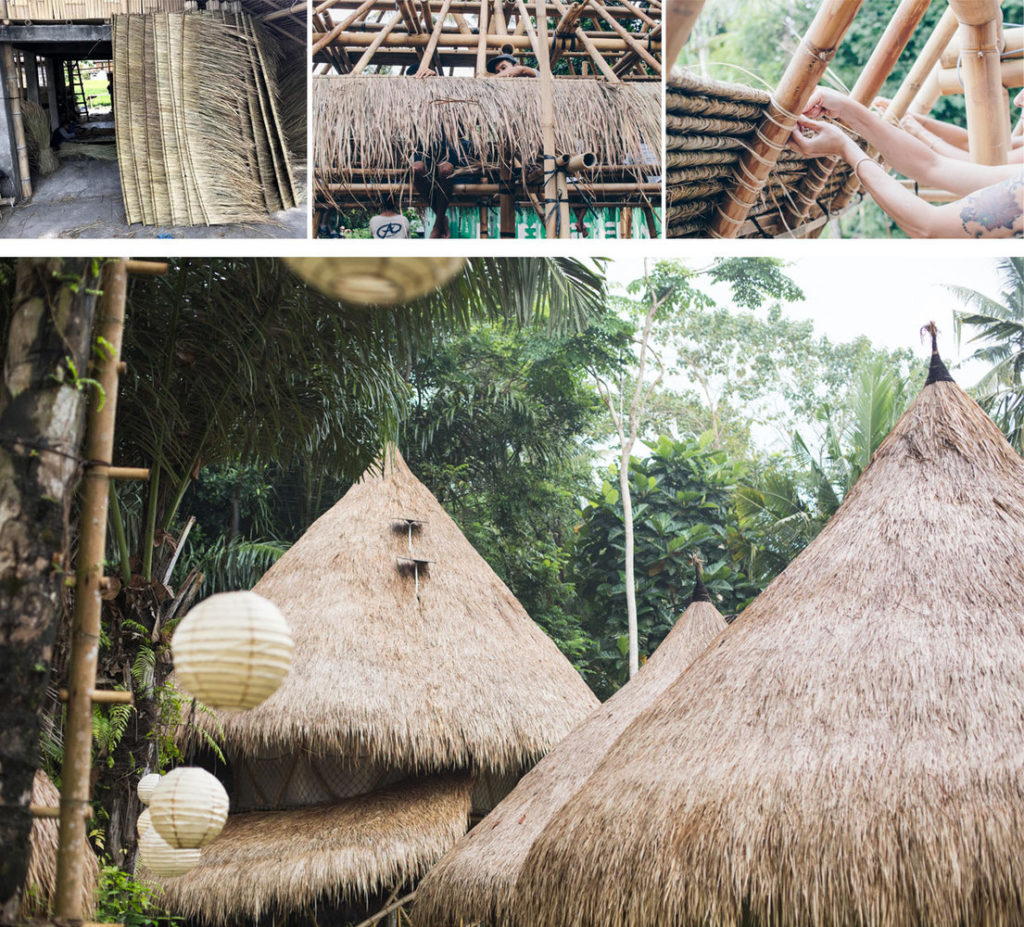
For thatched roofs Congo grass is harvested when mature and dried. Then, thatch panels of a maximum of 3 meters in length are made by folding the dry grass over a bamboo split and threading it onto the split using palm fiber. The bamboo split gives structure to the grass turning it into a panel whilst also acting as a roofing batten. When installed these panels are tied to the rafters using a lashing technique with bamboo rope. The roof pitch should be around 45 degrees for water to run off and it is recommend that the rafters be installed no further than 60 cm (2 ft.) apart to keep the roof from sagging. 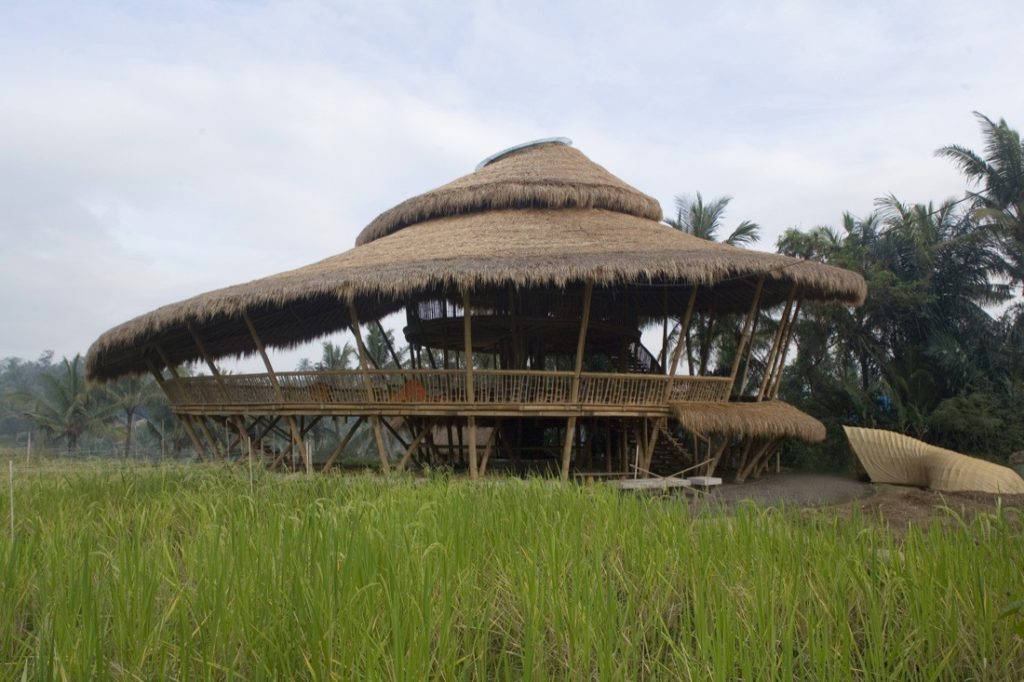
Such roofs are flexible and complement curved roofs well. Thermal insulation is an attractive benefit of this roof type. It has an incredible ability to breathe, and release warm air whilst keeping the air cool inside. A drawback of this roofing system is that it requires high maintenance; the roofs need to be replaced every 3-7 years. 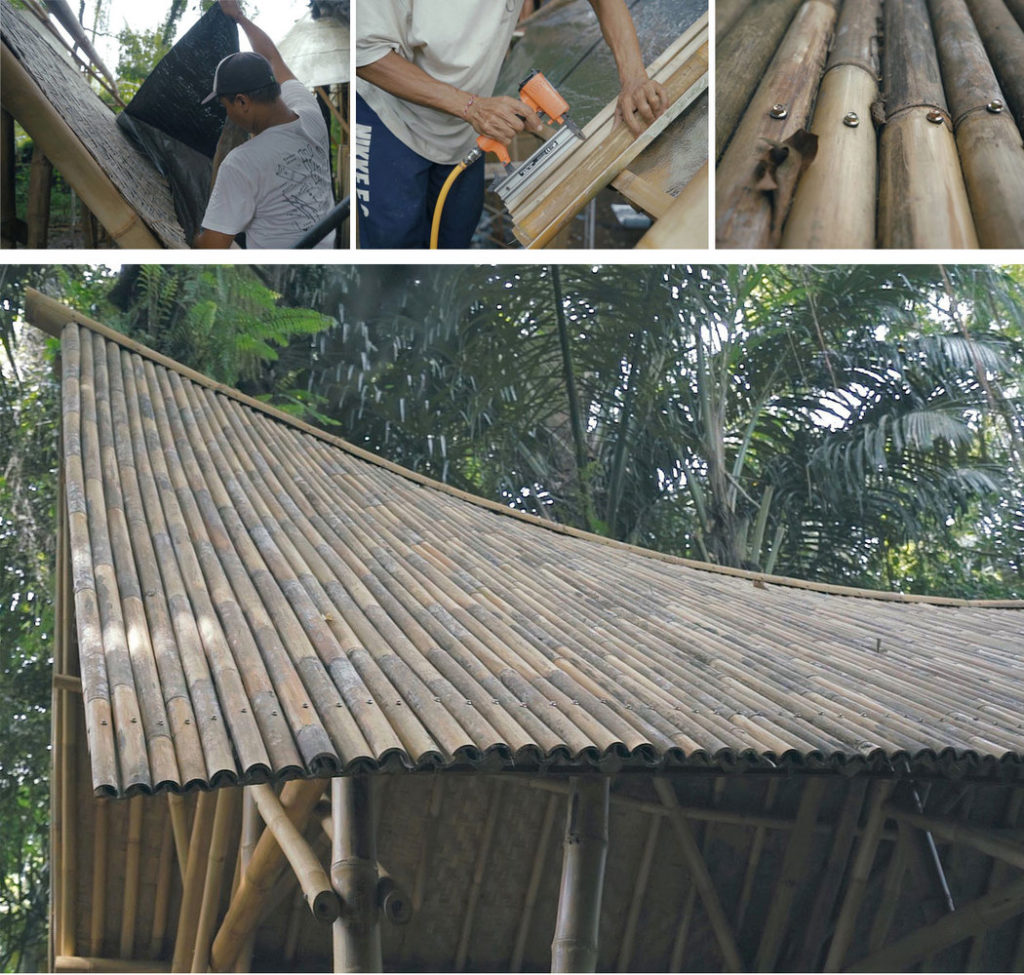
The halved bamboo roof is made up of freshly harvested bamboo poles split into two halves and placed in an interlocking sequence similar to a Spanish tile roofing technique. For a well-designed bamboo building using halved bamboo, the roof needs a minimum roof pitch of 40 degrees and the rafters should not be placed further than 60 cm (2 ft.) apart from one another. And the roof ridge needs to be covered properly.
To make your bamboo building last longer, you can also use 3 layers: the first layer is woven bamboo mats over the rafters for interior aesthetics, then an asphalt liner, and then cladding of half bamboo as a final layer. This roof works with slightly curved and small structures, but it is hard to use this technique for large and complicated curved roofs. This roofing system also requires high maintenance and needs to be replaced every 5 years; the bamboo degrades quickly if it is exposed to moisture or organic matter. 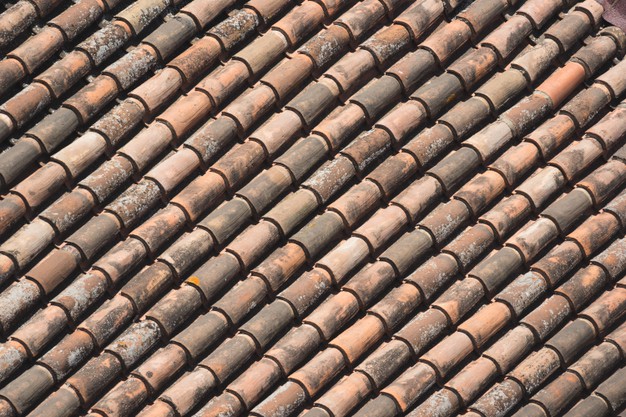
Terracotta tiles are a very durable roofing material. Roofs of this kind can last for 100 years. Terracotta tiled roofs are very heavy and therefore this added load must be accounted for. A minimum roof pitch of 35-degrees is recommended and rafters should not be placed more than 30 cm (1 ft.) apart. Battens (or laths) must be added to hold the tiles over the rafters. Tile roofs only work for linear buildings and maintenance is pretty minimal (some clearing of organic matter and replacing broken tiles.)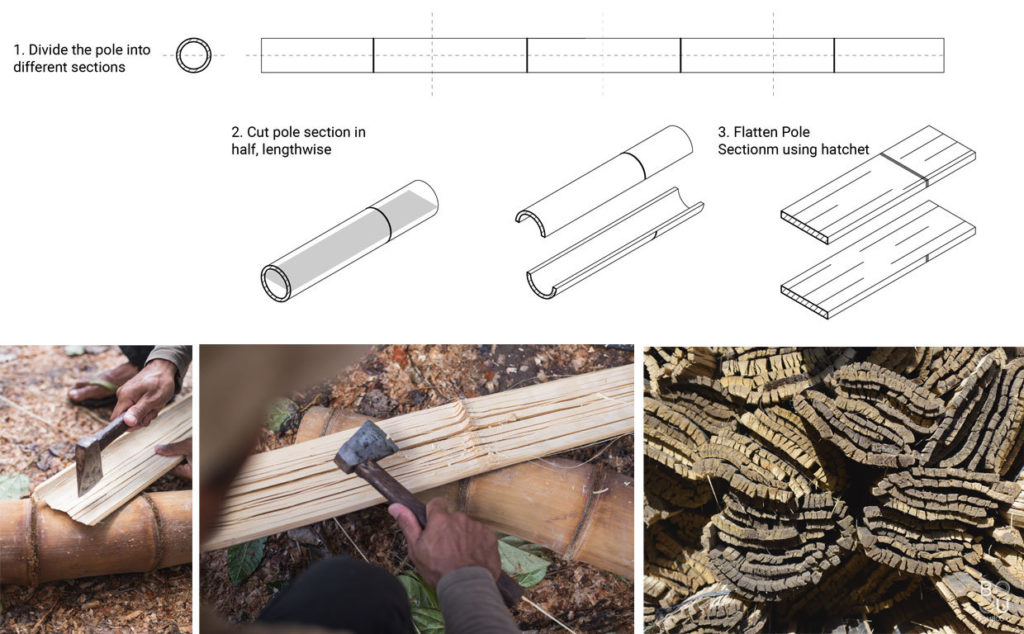
Flattened bamboo can be made into roofing shingles which are made by cutting a bamboo poles in half lengthwise. Then a cut is made into the culm wall from the inside out using a hatchet. The cuts do not pierce through the entire culm wall, just enough so that the section of the culm is flattened out. The cuts should be made at an angle to prevent splitting in the structure of the bamboo. The nodes are then shaved off using a bamboo knife or hatchet. 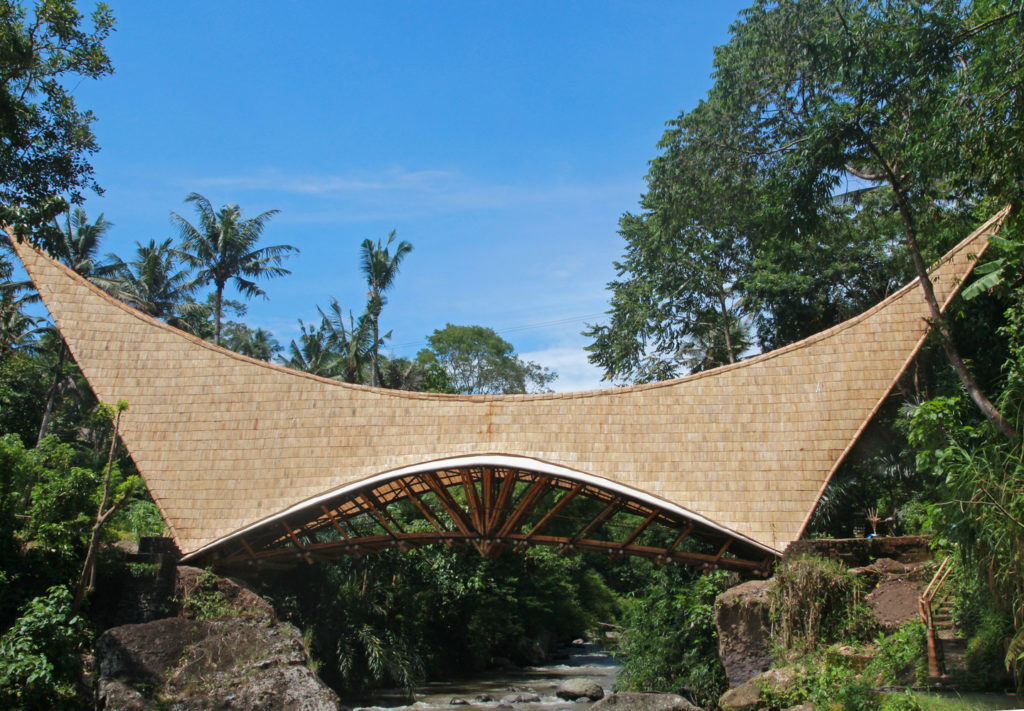
This processed bamboo material can be used in a 3 layered hybrid roofing technique where first is placed treated flattened bamboo over the rafters for interior aesthetics, then an asphalt liner (synthetic waterproofing membrane) and finally more flattened bamboo shingles which is cut to size. All layers are attached with nails.
For a well-designed bamboo building using a flattened bamboo roof, there should be a minimum 40 degree roof pitch and rafters should not be placed more than 40 cm (1′ 4″) apart. Flattened bamboo is very flexible and works nicely with curvilinear roofs. The synthetic waterproof membrane lasts for 20-25 years, but the outer bamboo layer must be replaced every 5-8 years. Flattened bamboo degrades quickly if it is exposed to moisture and organic matter. 
Copper roofing is a recent experiment for bamboo structures. It is durable but very costly. The copper sheets are customized as tile shingles on the ground by hand and put in place on the roof. For a well-designed bamboo building using a copper roof, a minimum pitch of 15 degrees is recommended, and rafters should not be placed more than 60 cm (2 ft.) apart. When constructing a copper roof, flattened bamboo shingles are first placed over the rafters for interior aesthetics, and an asphalt liner is then attached using a nail gun, and cladding of customized hand-cut copper tile shingles are placed as a final layer.
The copper roof is very flexible and works nicely for curvilinear roofs. Copper roofed buildings look very beautiful, even when weathered over time, when a lovely patina forms. This roofing system does not require maintenance.
Roofing is a very important element of bamboo construction and requires balancing a desire for sustainability, beauty, and durability.
You can read the original article at www.archdaily.com

What an excellent article/post! Consice, yet instructive and a thorough covereage of topic as per natural roofs. I am savingd this article for future reference. Thanks much Kelly for this, and all your excellent work following your and Dr. Owen’s years of work on this blog. I salute you both.
These Bamboo roofs are amazing! Beautiful, functional and sustainable in many aspects.
I want to point out a couple of important things to note that folks should be aware of, particularly ones outside the construction industry.
1. Complicated roofs of this nature require a lot of labor which makes them mostly only viable in areas where labor costs are very low. Basically areas where wealth inequity is quite dramatic. Certainly possible in the developed world but that lack of value for labor must exist or funding for the project very high.
2. Terracotta roofs are very durable and use earthen materials but require a substantial amount of energy in order to fire them in a kiln to make them ceramic. That energy can be provided by solar PV or combustion of a waste gas such as methane but the vast majority of the time it is not.
3. Copper roofs are beautiful and very durable but the impact of there mininig is very high and often environmentaly catastrophic. I suggest looking up existing and potential copper mine projects such as “Pebble Mine” in Alaska to see what the industry’s demand for copper can do.
There are no perfect answers but I think it is important to give a full a picture of construction impact to your readers and especially the ones who are outside the industry. It is tempting to be seduced by the fantastic craft and artistry of these beautiful structures but we must remain subject about the realities of their impact and viability.
Keep up the good work of sharing inspiring projects!
Thanks!
Won’t!!